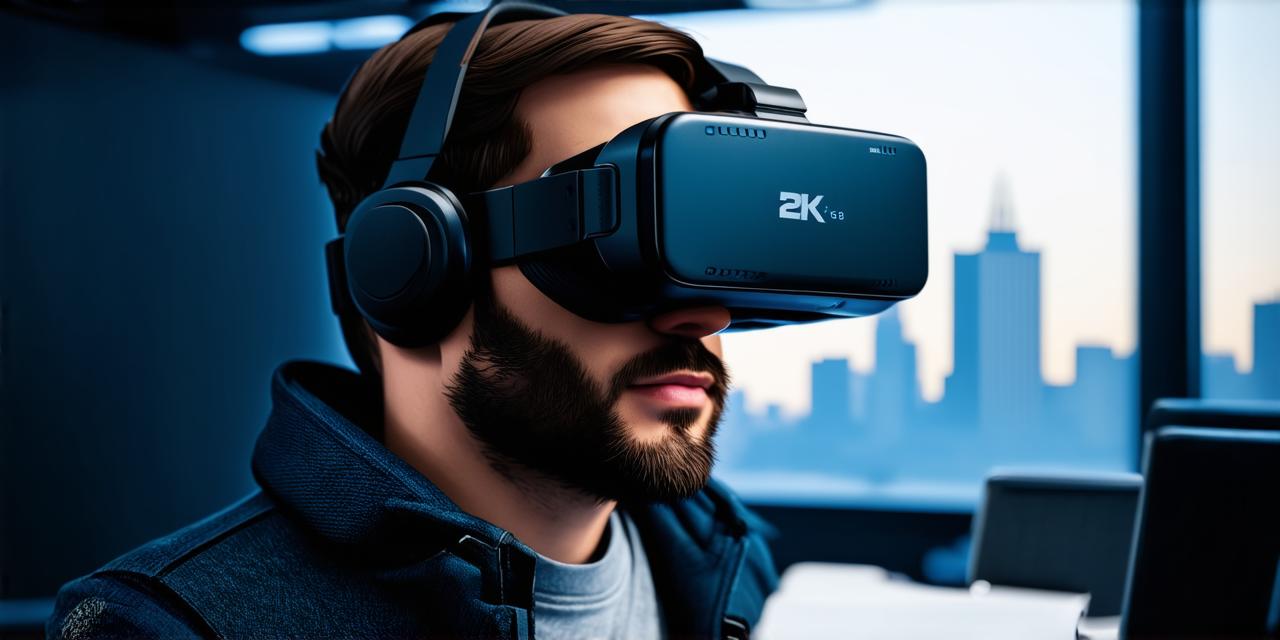Virtual Reality (VR) is revolutionizing the way we experience video games. With VR, players can immerse themselves in a fully interactive and lifelike environment that transports them to new worlds and challenges.
Hardware Costs
One of the most significant challenges of developing VR games is acquiring the necessary hardware to create high-quality experiences. VR headsets, controllers, and sensors are expensive and must be of the highest quality to ensure a seamless user experience. The cost of hardware can vary widely depending on the type of VR system being used, with high-end systems like the Oculus Quest 2 starting at around $400 and commercial-grade systems like the HTC Vive Pro Eye costing over $1,500.
In addition to the hardware itself, developers must also factor in the costs of setting up a dedicated VR studio or workspace. This may include purchasing additional equipment such as computers, monitors, and storage devices, as well as investing in specialized software and tools to support VR development.
Content Creation Costs
Creating high-quality content for VR games is also expensive. Developers must consider the unique challenges of creating immersive experiences that take advantage of the full capabilities of VR hardware. This requires specialized skills and knowledge, as well as access to high-end tools and software.
3D modeling and animation are critical components of VR game development, and specialized artists and animators with expertise in these areas are in high demand. In addition, sound designers must create realistic audio experiences that enhance the immersion of the player. All of these tasks require specialized skills and equipment, which can drive up the cost of content creation.
Testing and Quality Assurance
Testing and quality assurance (QA) are also critical components of VR game development. With so many variables at play in a VR environment, it is essential to ensure that the game functions properly and provides a seamless user experience. This requires extensive testing and QA processes to identify and fix any issues before release.
Testing VR games can be challenging, as it requires access to specialized equipment and software. Developers must also factor in the costs of hiring dedicated testers with expertise in VR development to ensure that the game is thoroughly tested and bug-free.
Marketing Costs
Finally, marketing VR games is essential to reach the target audience and drive sales. However, marketing VR games can be expensive, as it requires specialized skills and knowledge, as well as access to high-end equipment and software. Developers must also factor in the costs of creating promotional materials such as trailers, demos, and press kits.
Case Study: Beat Saber
Beat Saber is a popular VR rhythm game that has gained widespread critical acclaim for its immersive gameplay and engaging content. Developed by Beat Games, the cost of creating Beat Saber was significant, with the team investing heavily in hardware and software to create a high-quality experience.
According to Beat Games CEO John Bond, “We had to invest heavily in hardware and software to create a game that could run smoothly on all VR platforms. We also invested in marketing to ensure that we reached our target audience.”
The result was a highly successful game that has become a cultural phenomenon. However, the costs involved in creating Beat Saber are indicative of the challenges faced by VR game developers.
Comparing VR Game Development to Traditional Gaming
To understand the costs involved in VR game development, it is helpful to compare it to traditional gaming development. While both types of games require specialized skills and equipment, traditional gaming development is generally less expensive due to the lower cost of hardware and software.
In addition, traditional gaming development can be more efficient, as developers can use existing tools and software to create games for multiple platforms. VR game development, on the other hand, requires the creation of specialized content that takes advantage of the full capabilities of VR hardware, which can drive up costs.
FAQs
1. What are some of the key challenges faced by VR game developers?
Hardware costs, content creation costs, testing and QA costs, and marketing costs.
2. How does the cost of VR game development compare to traditional gaming development?
Traditional gaming development is generally less expensive due to the lower cost of hardware and software. However, VR game development requires the creation of specialized content that takes advantage of the full capabilities of VR hardware, which can drive up costs.
3. What are some of the factors that contribute to the high cost of VR game development?
Hardware costs, content creation costs, testing and QA costs, and marketing costs.
4. What are some ways that developers can reduce the cost of VR game development?
Using existing tools and software to create games for multiple platforms, investing in more efficient hardware and software, and leveraging partnerships with other companies to share resources and expertise.
Conclusion
Virtual Reality is revolutionizing the way we experience video games, but developing high-quality VR experiences is not for the faint of heart. The costs involved in creating VR games are significantly higher than traditional gaming development, with hardware, content creation, testing and QA, and marketing all contributing to the overall budget of a project.
To succeed in VR game development, developers must be prepared to invest in the necessary hardware, software, and expertise to create immersive experiences that take advantage of the full capabilities of VR technology. With the right approach, however, the rewards of developing VR games can be significant, both financially and creatively.
